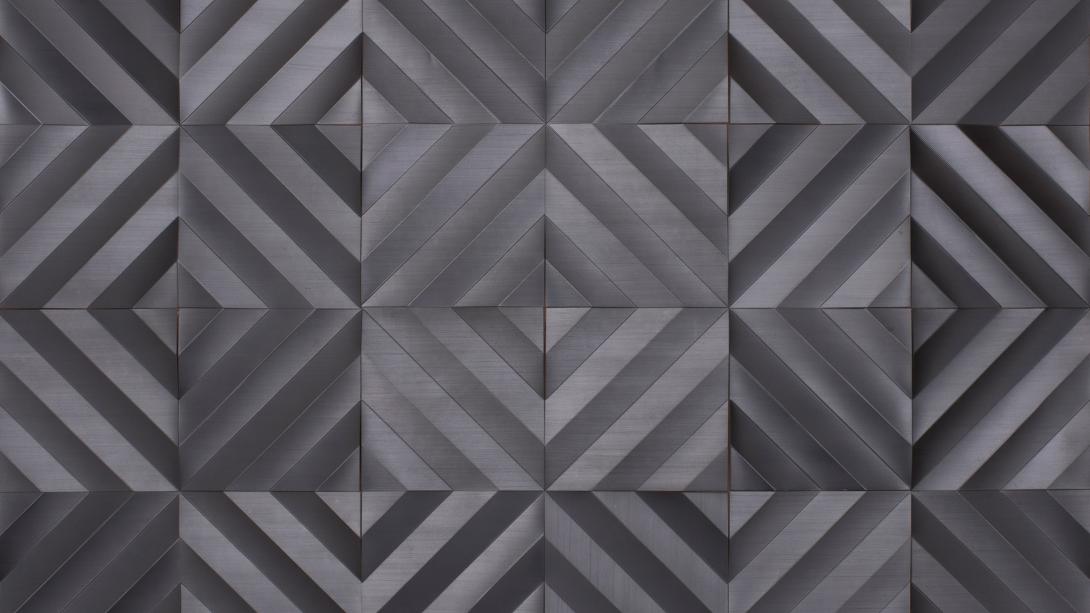Ayesha Sultana
APT9
Born 1984 Jessore, Bangladesh
Lives and works in Dhaka, Bangladesh
Using both conventional and found materials, Ayesha Sultana works with drawing, painting and sculpture to investigate properties of form, space and colour. For several years, she has been creating graphite works that play with illusions of depth and rigidity, unsettling distinctions between two and three dimensions. Sultana creates objects that are delicately made by hand but have the appearance of something metallic and machine-made. These works recall minimalist sculpture and are meticulously rendered in tonal gradations of graphite, the paper carefully moulded to create alluring three-dimensional shapes. Her drawings are often informed by architecture and the natural environment, and are composed of repeated lines and patterns that suggest a meditative stillness.

Ayesha Sultana / Bangladesh b.1984 / Vortex 2018 / Graphite on paper / 61 x 61cm / © Ayesha Sultana / Image courtesy: The artist and Experimenter, Kolkata
Ayesha Sultana translates her observations into abstract forms through meticulous drawings and sculptures. Her graphite drawings involve numerous applications of soft lead, using sticks, powder and brushes on layers of paper to develop seductive metallic textures. The thickly rendered sheets are then carefully cut, folded and fixed into sculptural compositions, creating rich combinations of shape, depth and subtle shifts in tone. With a contrast between hand-drawn surfaces and seemingly rigid sculptural shapes, these works explore the interplay between two- and three-dimensional forms.
Sultana’s works are not architectural studies; however, they are informed by the built environment of the densely populated Bangladeshi city of Dhaka. She is inspired by Dhaka’s constantly changing streets with their conglomerate of shapes, voids and textures, such as the corrugated tinned roofing seen throughout the city that originally inspired her graphite works. Sultana attempts to bring these observations into her practice, occasionally working from photographs or with collected objects, and also considering smells, sounds, objects and materials that are in plain sight, but which are often overlooked.
